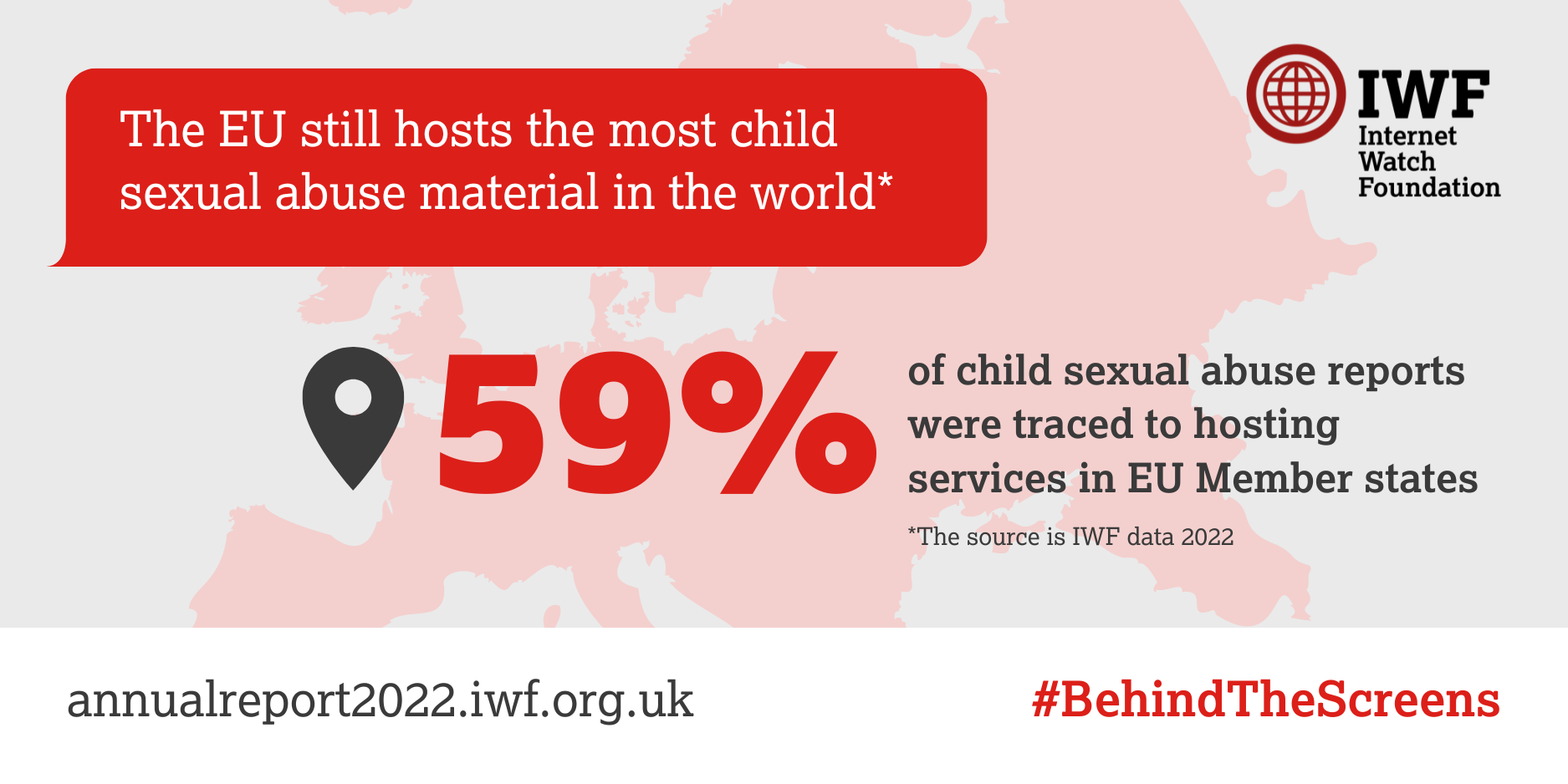
Peer39 joins with IWF to prevent offenders profiting from the promotion of child sexual abuse content
New collaboration between advertising expert and Internet Watch Foundation will hit criminals in their pockets.

Published: Wed 26 Apr 2023
The European Union still ranks highest in the world for hosting ‘horrific’ images and videos of child sexual abuse, with three in every five child sexual abuse reports (59%)* hosted in an EU member state.
New figures released on Tuesday (April 25) by the Internet Watch Foundation (IWF) show that Europe remains a global hub for child sexual abuse material despite dropping from 62% in 2021, demonstrating ‘the desperate need… to embed EU regulation’ that prioritises the protection of children online.

Most of the reports (32%) were tracked to servers in the Netherlands, a reduction from 41% in 2021. Slovakia had the second highest number of reports in the EU, with hosting figures of 12%.
The IWF is Europe’s largest hotline dedicated to finding and removing images and videos of child sexual abuse from the internet. It is the only European hotline with the legal powers to proactively search for this kind of content.
In 2022, the IWF took steps to remove 255,571 reports of confirmed child sexual abuse imagery from the internet. Of these, 150,419 were hosted in an EU member state, compared with 156,362 reports in 2021.
Reports actioned by the IWF are of webpages or URLs that can contain thousands of images of children being abused, tortured or raped, equating to millions in total. These children suffer repeatedly every time their abuse is uploaded, shared or sold on the internet.
A record-breaking number of reports in 2022 (51,369) showed Category A child sexual abuse material. This is higher than the IWF has ever seen before, doubling from 25,000 URLs seen in 2020.
Category A can include the most severe kinds of sexual abuse, including the rape of children, babies, and even newborns, as well as acts including bestiality, or sadism.
IWF CEO Susie Hargreaves OBE said: “There is still much work to be done urgently to eradicate this horrific imagery from platforms and service providers in Europe, and around the world.
“We cannot ever forget that every image contains a child who has been irrevocably harmed by a sexual predator. The effects of child sexual abuse continue to haunt survivors throughout their lives, and we must do our utmost to ensure their suffering is not unnecessarily prolonged by images of their abuse circulating on the internet.
“These figures highlight the desperate need for the EU’s proposed legislation to tackle child sexual abuse material and embed regulation that will help organisations prioritise the protection of children on their networks and platforms.
“Without the proposed new EU legislation to tackle child sexual abuse, companies will not be able to detect and remove child sexual abuse with clear legal certainty and there is a very real risk that an already bad record on hosting could potentially get worse.
“It is vitally important that companies continue to detect this material, using the quality data sets provided to them by the IWF and others as part of their risk management processes and obligations.
“And we need to act now, as evidence shows that the severity of the type of child sexual abuse identified and blocked by IWF analysts is getting worse. Category A web pages have doubled in number, increasing from 25,000 URLs in 2020 to 51,369 in 2022.”
IWF data show the Netherlands also hosts the highest number of child sexual abuse reports in the world (82,605), followed by the United States with 37,285 (15%) and Slovakia with 31,826.
When IWF analysts find imagery of child sexual abuse that fails UK law, they perform a trace on the URL to identify the location of the physical server that the content is hosted on to get it removed from the internet as fast as possible.
The IWF then works with partner organisations and hotlines in other countries to get the criminal content removed from the server to ensure that the image has been removed from any sites – like websites, forums, or image hosts – that could link to it.
The IWF is a founding member of INHOPE, the umbrella organisation for hotlines operating in Europe and around the world to identify and remove child sexual abuse material. In 2022 the IWF contributed 63% of all illegal content items to the INHOPE database.
Some criminal child sexual abuse sites, especially those created specifically to share imagery for commercial gain, are dynamic and deliberately move their hosting from country to country to avoid removal.
The IWF continues to track these sites when they change location and seeks to take them offline wherever they go. This trend has led to several new countries featuring in the top 10 of countries around the world hosting child sexual abuse material in 2022, such as the Slovak Republic.
Read the full report here.

New collaboration between advertising expert and Internet Watch Foundation will hit criminals in their pockets.